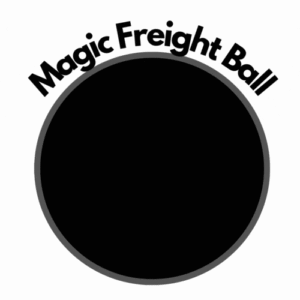Interlog  Insights
Insights
July 2023
The following is an archived collection of our weekly insights through the month of July. Those who had signed up to our Interlog Insights newsletter received each week’s update to their inbox on the original release date. If you like what you see below, please feel free to sign up yourself to get these updates right as they come!
This month's insights
- "Magic Freight Ball"
- Western Canada Labor Contract
- Panama Canal
Week 4 - Originally released July 28
Recap: West Coast Labor Uncertainty
In the coming days, dockworkers along Canada’s West Coast are set to vote on approving the tentative labor deal ILWU Canada and the BCMEA agreed to after a rocky several weeks highlighted by a 13-day strike.
While stakeholders will only let out sighs once the deal becomes official, there’s relief in the air that the protracted labor uncertainty along both Canada’s and the United State’s West Coasts has finally subsided.
Or has it?
Issues may remain brewing post-contract
For starters—the obvious—rail movement will remain stifled for the following weeks as this crucial mode to and from Vancouver gradually recovers after nearly two-weeks of being halted.
However, the impacts of not just Canada’s volatile labor situation, but also the U.S., reflects an uneasy dynamic that’s been forged between employees and employers. This will carry on beyond a few weeks and perhaps follow the industry into the next contract cycle.
While both countries saw an eventual deal done, the spilt water, as in employee pains, can never return back to the cup.
Now more than ever, dockworkers have expressed great frustration amid record profitmaking among carriers and port operators in pandemic-era shipping. While maritime employers raked in hundreds of billions of dollars, the workers felt far from getting their fair share.
After all, it’s true. Without dockworkers along North America’s West Coast, the region’s critical ports, like Los Angeles and Vancouver, would cease to exist.
Emboldened by perceived injustice coupled with being empowered by this reality, dockworkers are positioned to continue their streak of labor activism whenever and wherever applicable.
That said, this isn’t an immediate risk to West Coast operations. Rather, it’s more of a pacesetter of what stakeholders can expect going forward when it comes to labor-related situations.
Strikes, holdouts, and year-long negotiation sagas aren’t yesterday’s news. These inherent risks in any contract negotiation have been enflamed moving forward.
Both Canadian and U.S. officials had to step in to broker each respective deal. Exterior pressures from carriers diverting services and shippers rerouting, all while also fearing blame for jeopardizing peak season fluidity, ultimately drilled urgency into both sides to bury the hatchet.
In other words, concerns, like automation, have not been dismissed in the eyes of dockworkers. As an industry, it’s easy to think a contract solves everything, but it only just shoos these concerns away for a bit before they’re eventually resurfaced again with greater amplitude.
All eyes turn east
The attention turns to the U.S. East and Gulf coasts as September 30, 2024 is when their current International Longshoremen Association contract expires.
While the date is relatively far out in advance and the talks are supposedly running smoothly, a few stakeholders remain weary for any sort of hurdle that’ll all the sudden jet out. It’s reasonable for there to be some nerves given how prolonged things were for the West Coast.
However, the vast majority seem to be lax, for now, about these negotiations.
One notable difference to the West Coast is that the East and Gulf do not have one master contract that oversees all union chapters. Rather, each local chapter negotiates their own agreements separate from one another.
NEW Prediction: August Rate Increases
Interlog’s experts are predicting similar carrier rate increases into August for transpacific lanes. For reference, the July 14 increase ranged from $300 to $500 to the U.S. West and East Coast. Unlike earlier in the year, July’s increases have sustained through the month, propping up rates. This means that any increases in August will tack on to already risen rates.
Recap: Panama Canal and Delays from Draft Restrictions
Week 1: The Panama Canal Delays Draft Restrictions – Latest Updates
Recap: The Panama Canal is a shortcut which makes it possible for vessels to travel between the Atlantic and Pacific Oceans, in significantly less time. The draft restrictions and water levels have been a largely discussed topic in the industry this year, and what the impacts would be.
Latest Updates: On July 25th, 2023, the Panama Canal Authority put out a press release:
• The Panama Canal would be maintaining a draft of 44 feet for the next several months, as long as the weather conditions do not vary significantly from what’s currently being project.
• This will allow for an average of 32 vessels per day to being able to transit through the canal.
Week 2: What is the El Niño Phenomenon and How Does it Impact the Panama Canal?
Recap: For those that don’t know, the El Niño Phenomenon is a natural phenomenon that impacts the tropical Pacific Ocean. Many expect that it will increase global temperatures and push this year into next, to be some of the warmest on record.
Many experts have been concerned that the phenomenon will trigger an early start to the rainy season in 2024, which would further impact the water stoppage in the Panama Canal watershed.
Week 3 - Originally released July 21
Insight: Union Leaders Call Off Tentative Deal, Labor Uncertainty is Back in Western Canada
Last Thursday, Western Canada’s dockworkers union strike was thought to be finally relinquished after a grueling 13-days of action.
ILWU Canada and the British Columbia Maritime Employers Association (BCMEA) shook hands on a tentative agreement for a long-awaited labor contract.
A looming supply chain disruption to the U.S. and Canada was thought to be averted while impacted operations could gradually recover from a near two-week interruption to regular flow.
However, as we’ve come to say, logistics are uncertain.
On Tuesday, ILWU’s internal caucus rejected the agreement prior to a vote by the full union membership. While BCMEA, representing employers, ratified the new deal, ILWU played an Uno reverse card and retrieved its pickets.
The group, representing thousands of dockworkers at Vancouver and Price Rupert ports, informed that it’d be striking again.
Via a union statement, ILWU’s caucus “does not believe the recommendations [from government brokerage] had the ability to protect [its] jobs now or into the future.”
The group’s bailout from the deal obviously shocked the industry, however the revamped strike only lasted into the night. A Canadian labor board ruled ILWU’s decision illegal citing a failure to supply advanced notice of the action.
While the threat of strike has been sidelined for now, the tentative agreement might as well be thrown into a paper-shredder. The two sides are at an impasse again.
Rail movement, port congestion likely reaggravated
This step backwards from a tentative deal to the negotiating table reaggravates an already saturated field of supply chain disruption.
Western Canada ports Vancouver and Prince Rupert are not just major hubs for Canadian trade, but for the U.S. as well. The ports’ intimate integration with rail networks plays a key role for many American importers.
Even if the agreement hadn’t fallen apart, impacted supply chains were still looking at weeks, if not months, until a full recovery from the initial strike.
With that deal out of the picture now, uncertainty casts its shadow again over anxious shippers. Rail movement could grind to halt once more while ship traffic outside of Western Canada’s ports may expand.
What’s the latest?
Regarding another strike, at least the immediate threat of one is unlikely.
On Wednesday, ILWU Canada called off its strike that was planned tomorrow after giving 72-hours’ notice.
While this decision can’t directly confirm whether the two sides have made progress since the union’s rejection of the original deal, it’s relatively assuring that the union hasn’t immediately pursued such a disruptive action right out of the gates.
ILWU Canada remains determined to seek a deal that addresses their concerns for member wages amid inflation trends and increased jurisdiction of maintenance work at marine terminals.
The BCMEA was critical of ILWU’s rejection of the agreement and stated the union’s rank-and-file members weren’t able to vote on the tentative contract. The group suggests ILWU has now jeopardized the Canadian economy and regional supply chains.
Canada’s government, who acted as a mediator for last week’s tentative deal, urges the initial contract is a “fair and balanced” deal while also stressing the ports need to stay open.
In theory, Canada’s Parliament can authorize to end strikes, but this process could prove tricky given political divides within its walls. On top of that, Parliament began its summer break in June and remains in recess.
In the News: Top Industry Headlines
• First half volumes at Antwerp-Bruges dip due to weak demand – In the first half of this year, the port saw throughout drop to 5.2 percent (6.4 million TEUs) compared to the same time last year. However, the port has been an increase in reefer volumes.
• Yellow Corp misses’ payment: shippers consider alternatives – On July 15, Yellow Corp missed a payment to the union’s pension and healthcare fund, triggering a potential strike set for July 24.
• Blank Sailings on the Asia-Europe trade lane hit a two year low – As Low volumes continue to drop and a bleak outlook on seasonal demand, blank sailings on the Asia-Europe trade lane is at a two-year low. Data shows that of the total capacity from Asia to North Europe and the Mediterranean, 8.7 percent (199,051 TEUs) were canceled in July.
• Pilots’ union at UPS will honor picket lines if Teamsters go on strike – The International Brotherhood of Teamsters has threatened to go on strike if they don’t reach a new labor agreement with UPS by August 1st. Talks broke on July 5 but are expected to resume this upcoming week. Additionally, the head of the Independent Pilots Association let the General President of Teamsters know that they will honor picket lines in a show of support.
Week 2 – Originally released July 14
Insight: Canadian West Coast Strike Ends as Tentative Agreement is Reached
Yesterday, the 13-day longshore strike that hit the Western Canadian ports of Vancouver and Prince Rupert has ended after the International Longshore and Warehouse Union Canada and maritime employers reached a deal on a tentative four-year contract.
While the immediate threat—a divisive stalemate—has been relinquished, the dust of left behind disruptions is far from settling.
This Saturday would’ve marked two weeks since some 7,400 Canadian dockworkers began their strike along Canada’s West Coast ports.
Apart of ILWU Canada, port employees engaged in this disruptive job-related action in response to stalling negotiations for a new labor contract with the British Columbia Maritime Employers Association (BCMEA), the party representing their port employers.
Unhappy with the latter’s initial proposals on wages and job security regarding automation, ILWU Canada’s strike unraveled a trade situation that rivaled the COVID chaos the industry thought it’s since departed from.
The strike lasted nearly two-weeks and the supply chains that orbit Canada’s West Coast found themselves dire straits. Container shipping to and from the ports of Vancouver and Prince Rupert became stifled with congestion, while rail movement was stymied.
As conditions deteriorated, Canada’s Minister of Labour, parallel to the U.S. Secretary of Labor, intervened in a bid to end the strike.
While the tentative agreement is great news, this progress does not bail the region out from the lingering impacts of this disruption.
Surely, it’s better late than never, but it may take weeks, if not months, for maritime and rail operations to fully recover from the initial strike
Rail traffic has plummeted
Earlier this week, the Association of American Railroads (AAR) reported a 46 percent drop (year-over-year) in freight rail traffic entering the U.S. from Canada. This emphatic pitfall can only be attributed to the recent labor strike.
As Interlog’s experts covered last week, rail is the premier mode for facilitating cross-border freight movement between the two countries. About $572 million in container trade arrives daily in the U.S. from Canada, per U.S. Census data, while 20 percent of U.S. trade arrives at either Canada’s Vancouver or Prince Rupert ports.
In the crosshairs of a halted rail network are several trade sectors, ranging from forest products to chemicals.
Vancouver ship queue grows as services are diverting to U.S. ports
On the maritime side, industry attention was easily grabbed by the optics of vessel congestion. Earlier this week, Vancouver had a ship queue well into double digits. Several ships were standing pat in the port’s harbor, while a handful of others were waiting off the Pacific Coast.
The expansive backlog rightly concerned stakeholders. Major carriers, including CMA CGM and MSC, rerouted some of their Canada-bound vessels to U.S. West Coast instead.
In response, ILWU (U.S. West Coast chapter) President Willie Adams said, “The ILWU will not be unloading Canadian bound cargo in solidarity with our Brothers and Sisters in ILWU Canada.”
While that was enough for folks to spit out their coffee, in reality, this never was proven true. Several ships that diverted had been serviced at U.S. ports as union dockworkers typically don’t have security clearance to access container information, the likes of which would verify whether a shipment was initially bound for Canada.
If it isn’t apparent enough, the clock is still ticking on a return to the regular.
The strike billowed for 13 days. For every day it had lurched, tack on three or so days extra for impacted supply chains and rail networks to fully recover.
While the immediate crisis has been averted, a legacy of disruptions will live on for the next few weeks, if not month.
NEW Podcast Episode: All Things U.S. and Canadian West Coast
Interlog’s Emily Smith and Harry Lien discuss a wild West Coast, including a recap of the 14-month contract negotiation on the USWC and Western Canada’s current labor impasse. Interlog is proud to present its tenth installment of FreightFM, a short-form video podcast.
Insight: What is the El Niño Phenomenon and How Does it Impact the Panama Canal?
Last week we discussed the importance of the Panama Canal – a shortcut that makes it possible for vessels to travel between the Atlantic and Pacific Oceans in significantly less time.
There’s been lots of talk regarding the drought in the Panama Canal due to the ‘El Niño phenomenon.’ But what is the El Niño phenomenon?
The El Niño is a natural phenomenon that impacts the tropical Pacific Ocean. It is expected to increase global temperatures and push this year, into next to be some of the warmest on record.
According to National Geographic, El Niño has a direct impact on ocean temperatures, the speed and strength of ocean currents, the health of coastal fisheries, and local weather from Australia to South America and beyond.
How does El Niño impact the Panama Canal?
Many experts are concerned that the phenomenon will trigger an early start to the rainy season in 2024, which would further impact the water shortage in the Panama Canal watershed.
This has forced the PCA to implement draft restrictions and lower the number of daily transits through the original lock, to help preserve water.
The Panama Canal Authority is continuing to closely monitor the development of weather events affecting water availability in the Canal.
Week 1 – Originally released July 7
Insight: Western Canada's Strike Winds Up Disruptions for the Country's Largest Port
This morning marks almost a week since a strike by some 7,400 Canadian dockworkers against their West Coast ports employers began.
Since last Saturday, the International Longshore and Warehouse Union Canada’s Longshore Division (ILWU Canada) has been engaged in this macro job-related action as negotiations continue to stall with the British Columbia Maritime Employers Association (BCMEA).
Days after the strike launched, the BCMEA released a statement announcing that talks with ILWU Canada have been paused. Further in the statement, the party representing port employers iterated a it’s not us, it’s them sentiment. In other words, they assert ILWU Canada has failed to modify its positions and is unopen to compromise.
The union remains staunch on wage increases, an end to contracting out, and job protection from automation.
The current impasse mirrors the U.S. West Coast’s contract negotiations that finally ended in a tentative agreement last month.
Automation and wage boosts were staggering hurdles that took West Coast dockworkers and port employers nearly 14 months to get over.
Contract talks between ILWU Canada and BCMEA began much after the USWC, however. They started in February of this year. The previous contract in place for British Columbia ports expired March 31.
This time around, the place of tension fixates on West Canada’s coast. A strike of this magnitude threatens freight movement along this vital stretch of trade, not just for Canada, but for the U.S. as well.
Vancouver and Prince Rupert are two of the busiest container hubs in Canada, with the former the country’s largest port by virtually every measure.
Impacts remain unclear, still Vancouver prepares for the worst
The Port of Vancouver, which had a throughput of 3.6 million twenty-foot equivalent units (TEUs) in 2022, has been bracing for the worst.
It’s uncertain what exact impacts will unravel from this strike, however, according to the port authority, one-dollar for every three-dollars of Canada’s trade in goods outside of North America moves through Vancouver.
Even marginal disruptions to the port’s operations will have direct impacts on import and export movement through its facilities.
Intermodal shipping via rail is also popular to and from Vancouver, particularly for American shippers. The port is widely known and preferred for its integrated facilities across terminals and rail corridors.
The work stoppage could easily spur on bottlenecks that may take weeks, if not months, to correct depending on how long the strike lasts.
Class I Railroad Canadian National has said the labor dispute could result in increased shipping and consumers costs if it continues.
Concerns for ag industries, exporters
Trade associations, especially ones in the agriculture business, are urging the two sides to come to an agreement.
Agriculture is one of North America’s strong productions. The industry is dependent on ports to handle their perishable cargo promptly and efficiently while in transit to overseas markets.
Delays mean higher transport costs while also potentially expiring over careful timelines.
Potash, a substance used as a fertilizer, is one export commodity that can’t afford any disruption. Canada exports 95 percent of its potash production to global markets, with the majority sent through Vancouver.
Second in export value only to gold, over $5.52 billion is contributed every year to Canada’s GDP from outbound potash.
Insight: European Peak Season - What is Being Forecasted?
Further draft restrictions that were expected to go into effect June 25, have since been delayed until further notice.
The expected rain is one of the reasons for the delayed restrictions.
“Due to favorable weather conditions experienced during the past several days in the canal watershed, the Panama Canal Authority announces the postponement of the maximum authorized drafts,” the PCA wrote in a shipping advisory.
Additionally, some reports are showing the Panama Canal Authority is lowering the number of daily transits through the original lock in an effort to preserve water.
Specifically, the PCA plans to reduce the number of daily transits (mainly in its Panamax locks) to 32 to 30 transits a day in comparison to the typical 36 to 34 daily transits, per CNBC.
Why is the Panama Canal a crucial waterway?
Simply put, the Panama Canal is a shortcut that makes it possible for vessels to travel between the Atlantic and Pacific Oceans in significantly less time.
Almost half of all U.S. container traffic travels through the Panama Canal every year, which equates to approximately $270 billion on cargo annually.
Additionally, the U.S. remains the biggest user of the Panama Canal, with total U.S. export and import containers representing almost 75 percent of Panama Canal traffic, per CNBC.
So, when things like draft reductions occur on the waterway, it can create significant impacts for U.S., and overall trade.
A little history on the Panama Canal and how it works…
The Panama Canal is an 80 kilometer waterway. Per the Embassy of Panama, the waterway works by using a system of locks with two lanes that operate as water elevators.
It then elevates the ships from sea level to the level of Gatun Lake – 26 meters above sea level – to allow the crossing through the Continental Divide, and then lowers the ships to sea level on the other side of the Isthmus.
LIVE Content: Have you checked out our webinar?
Ask our experts any pressing question you have in international shipping. No need to worry! All submissions are anonymous and, who knows, someone else may have the same question as you.
What did you think?
In addition, please email us at support@interlogusa.com with any news or topics you’d like our experts to cover in future issues!


